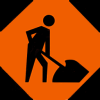|
|
Work EquipmentSend comments on this topic |
FREE QHSE Software Click <HERE> to Learn More |
||
QHSE Support >(Site Map) Health & Safety Guidance > Work Equipment >
Work Equipment guidance - STATUTORY DUTY
EVERY EMPLOYER HAS A STATUTORY DUTY TO ENSURE THAT "WORK EQUIPMENT" IS SAFE TO USE
Work equipment covers a multitude of tasks that employees are asked to perform, this can range from simple hand tools to automated machinery and some quite complex, multi-part apparatus used every day in workplaces, factories, offices, shops, hospitals, construction sites, and farms etc. Some organisations may find the requirements of the Provision and Use of Work Equipment Regulations 1998, (commonly referred to as PUWER) more challenging to be fully compliant with, within the maze off health and safety legislation they must satisfy, this is hardly surprising when you consider the PUWER Regulations themselves have over 30 regs to be considered when assessing work equipment and activities.
It should be remember that the PUWER Regulations aims to make working life safer for everyone using and coming into contact with equipment, whether employers, employees, contractors, suppliers, or others. Like all regulations, they need to be studied closely. The words have been chosen carefully and sometimes have a precise legal meaning. At other times, you need to interpret the regulations according to your own situation. The regulations are prescriptive, they do not dictate how you should comply with their intent, merely that you must comply (where applicable to your circumstances).
Breaking the PUWER down into a brief summary of duties placed upon and employer shows a requirement to;
•Ensure that equipment is suitable for its intended use;
•Consider the working environment when choosing equipment;
•Maintain equipment in good order;
•Train and inform staff in the use of work equipment, including such procedures as daily checks and defect reporting;
•Only allow trained personnel to use work equipment;
•Ensure equipment is provided with effective safeguards such as protective devices, markings and warnings.
with regards to the key terms of Work Equipment, and Use of Work Equipment.
Work Equipment is any equipment, machinery, appliance, apparatus, tool or installation for use at work, and the Use of Work Equipment includes, using, starting, stopping, programming, setting, transporting, repairing, modifying, maintaining, servicing and cleaning.
As is with the common theme across UK health and safety legislation there is an inherent requirement to carry out risk assessments for each job, not just those using work equipment, this involves:
•identifying hazards — anything that can cause harm;
•assessing risk — the chance of harm actually being done (this helps you to work out what action to take to eliminate and reduce those risks);
•eliminating and reducing the risk — ask yourself whether it's possible to eliminate any of the risks, perhaps by working out different ways of doing things; if it's not possible to eliminate all the risks, list ways to reduce them and identify the precautions to take.
The requirements of PUWER should not be considered in isolation as other general and specific health and safety legislation will also need weighing up. These include, but are not limited to;
•the general duties of employers under Section 2 of the Health and Safety at Work etc Act 1974
•general duties of manufacturers etc. on articles for use at work under Section 6 of the Health and Safety at Work etc Act 1974.
•the requirements for risk assessments in the Management of Health and Safety at Work Regulations 1999.
Also where the work equipment is of a specific type e.g.,
•lifting equipment also falls under the Lifting Operations and Lifting Equipment Regulations 1998
•display screen equipment falls under the Health and Safety (Display Screen Equipment) Regulations 1992 as amended by the Health and Safety (Miscellaneous Amendments) Regulations 2002
Therefore it can be seen that the requirements of legislation dedicated to some types of plant and equipment must also be considered in tandem with PUWER.
Help file v2.276.407 : QHSE Support - Website On Safe Lines
onsafelines.com QHSE Software 2025 : Webmaster: Brian G. Welch MSc(QHSE), NVQ4(OH&S), CMIOSH



